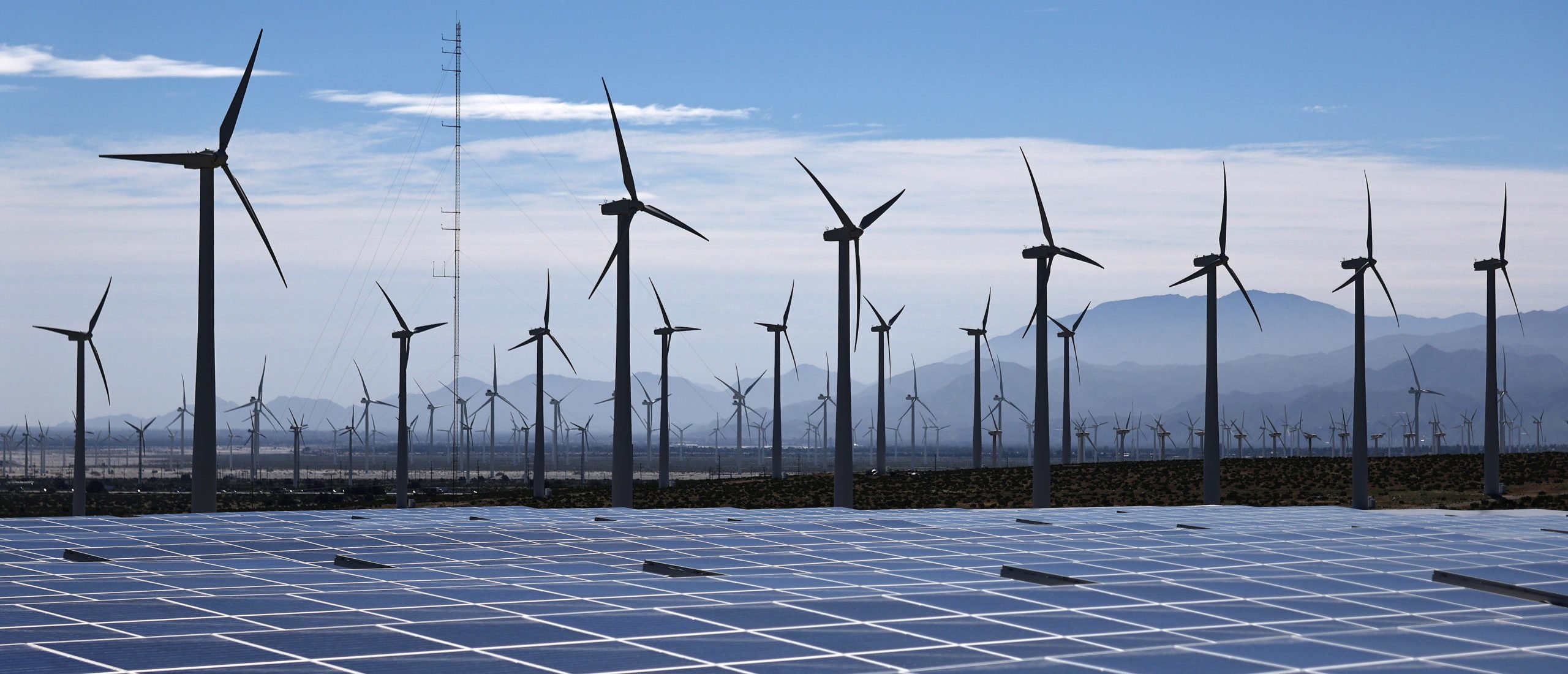Electricity supply across the United States could become unstable over the summer months if weak generation from solar and wind energy coincides with high rates of energy consumption, a reliability assessment released Wednesday found.
Four major grid systems that manage power for portions of 37 states could face power shortages or outages this summer if solar and wind do not meet energy demand, according to the North American Energy Reliability Corporation’s (NERC) 2025 summer reliability assessment. NERC designated the power grids at an “elevated risk,” meaning that the regions’ backup power reserves that protect against grid emergencies could drop to critically low levels during periods of elevated electricity use, such as during a heat wave.
The assessment “reflects a mixed outlook, progress in some areas, but a grid still under stress,” John Moura, NERC director of reliability assessment and performance analysis, told Politico’s E&E News. “That means careful and coordinated planning, timely investment in infrastructure, and staying vigilant through every hour of the season.” (RELATED: A Major Backer Of Green Energy Admits Again That Solar And Wind Power Alone ‘Can’t Reliably Keep The Lights On’)

Wind turbines operate at a wind farm near solar panels on March 06, 2024 near Palm Springs, California. (Photo by Mario Tama/Getty Images)
“New resource additions — primarily solar and some batteries — are helping to meet surging load growth,” the report continues. “However, these additions are offset by ongoing generator retirements and introduce more complexity and energy limitations into the resource mix,” NERC states.
As American energy demand continues to climb, the odds of impending blackouts will increase if the supply fails to grow at the same rate, as predicted by some reports. In response to this concern, President Donald Trump declared a national energy emergency immediately upon returning to the White House, stating that “the integrity and expansion of our Nation’s energy infrastructure” is “an immediate and pressing priority for the protection of the United States’ national and economic security.” His administration has also taken legal action against states that aimed to “stand in the way” of Trump’s energy agenda, and on April 8, the president signed an executive order instructing his administration to investigate state-level attempts to sue or otherwise extract massive payouts from energy companies in the name of climate change.
The Midcontinent Independent System Operator (MISO) grid, the Southwest Power Pool (SPP) grid, the Electric Reliability Council of Texas (ERCOT) along with the New England Independent System Operator (NPCC) are among the grids at risk, according to NERC.
“While all areas are projected to have adequate resources for normal summer conditions, above-normal electricity demand, periods of low wind and solar output, and wide-area heat events that disrupt available transfers and generator availability could leave system operators short on supply in at-risk areas,” an announcement on the report states.
“The performance of wind and solar generators is a key factor in determining whether system operators need to employ operating mitigations,” the report writes in regard to the MISO grid, which powers portions of 15 Midwestern states. The region has reduced its reliance on readily available energy sources such as gas, coal or nuclear power, and its increased reliance on “solar and wind resources” to meet demand is a driving factor of its potential risk, according to NERC. (RELATED: ‘Unforced Error’: Energy Experts Say ‘Rush To Renewables’ Helped Trip The Switch On Spain’s Grid Crash)
“While the grid faces several challenges this summer, areas such as Texas, California, and across the U.S. West have seen an influx of battery energy storage systems in recent years, which is reducing energy shortfalls associated with supply variability and demand spikes,” NERC’s manager of Reliability Assessments Mark Olson said in the announcement. This is enhancing system operators’ ability to “manage energy risks during challenging summer periods,” he continued.
ERCOT, which manages most of the Texas grid impacting over 27 million people, relies heavily on both solar and wind for energy generation. This “continued growth in both loads and intermittent renewable resources drives a risk of emergency conditions in the evening hours when solar generation ramps down and loads remain elevated,” the NERC report states.
In the SPP region, which powers portions of 15 states, this summer “wide-area heat events can drive high electricity demand and force generators off-line, leaving operators with insufficient flexible resources to counter wind resource variability,” the report writes.
The NPCC grid, which powers the six New England states and parts of New York, has lost reserve capacity from last year and may need to increase its “reliance on neighbors” during “stressful summer conditions,” the report added.
NERC’s 2024 report and an analysis from Always On Energy Research have both projected that rolling blackouts could begin in certain U.S. regions in the next few years. The push toward renewable energy sources, in addition to stringent environmental regulations, may have contributed to the slower growth of energy supply in the U.S., several energy experts have cautioned.
NERC, MISO, ERCOT, NPCC and SPP did not respond to the DCNF’s request for comment.
All content created by the Daily Caller News Foundation, an independent and nonpartisan newswire service, is available without charge to any legitimate news publisher that can provide a large audience. All republished articles must include our logo, our reporter’s byline and their DCNF affiliation. For any questions about our guidelines or partnering with us, please contact licensing@dailycallernewsfoundation.org.



![‘It’s a Recipe for a Hundred Years of National Dominance’: Stephen Miller [WATCH]](https://www.right2024.com/wp-content/uploads/2025/05/Stephen-Miller-Completely-Obliterates-CNN-Host-Over-Her-Illegal-Immigration-350x250.jpg)

![Trump Posts Hilarious Pope Meme, Leftists Immediately Melt Down [WATCH]](https://www.right2024.com/wp-content/uploads/2025/05/Trump-Posts-Hilarious-Pope-Meme-Leftists-Immediately-Melt-Down-WATCH-350x250.jpg)


![Mother Breaks Silence After Three Daughters Killed During Father’s Custody Visit, Memorial Held [WATCH]](https://www.right2024.com/wp-content/uploads/2025/06/Mother-Breaks-Silence-After-Three-Daughters-Killed-During-Fathers-Custody-350x250.jpg)

![Wild Road Rage Brawl Erupts in Milwaukee [WATCH]](https://www.right2024.com/wp-content/uploads/2025/05/Road-Rage-Turns-Violent-in-Oregon-Minivan-Mows-Down-Motorcyclist-350x250.jpg)





